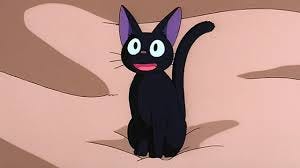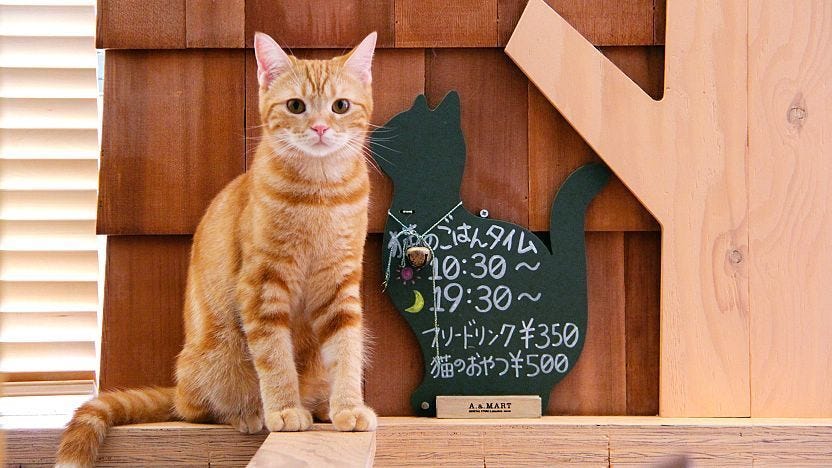Cats in Japan: Symbols, stories, and cultural icons
Tracing the history of cats and their omnipresence in Japanese culture
Japan has long been recognised as a cat-loving nation, boasting one of the highest numbers of domestic cats in the world. Statistics from 2023 show that there are over 9.1 million pet cats in the country. From folklore and classical literature to contemporary entertainment and popular culture, cats hold a revered place in Japanese society. Their ubiquity shows how cats are an integral part of the country’s traditions, aesthetics, and everyday life, symbolising everything from good fortune to mystery and mayhem.
Cats in Japanese History, Folklore, and Classical Literature
The reverence for cats in Japan can be traced back to ancient times. Tracing the origins of cats in Japan is challenging, but the most widely accepted theory suggests they arrived between 538 and 552 AD, coinciding with the introduction of Buddhism. Monks likely brought these feline companions to protect sacred scriptures from mice. Another theory points to the Nara Period (710–784 AD), a time of significant Buddhist influence, as their possible arrival. Some accounts even suggest that cats were traded as luxurious gifts between emperors and lords. While their exact origins remain uncertain, historical records indicate that Japanese domestic cats came from India but were introduced via China. This claim is supported by Emperor Uda’s diary, where he documented receiving a black cat from China. By the 10th century, cats like Emperor Ichijo’s beloved Myobu no Otodo held prestigious court ranks, with attendants assigned to care for them as if they were nobility. Over time, these creatures multiplied, spreading across Japan until they became commonplace by the 12th century, no longer seen as exotic pets reserved for the elite. This period also saw the rise of supernatural cat legends, which later inspired traditional Japanese art in the 17th century, solidifying the cat’s status as a powerful cultural symbol.
One of the most well-known figures in Japanese folklore is the bakeneko (化け猫), or “ghost cat,” a supernatural feline believed to possess shape-shifting abilities. A similar creature, the nekomata (猫又), is said to be a cat that has lived long enough to grow a second tail and develop magical powers. These mythical cats appear in Edo-period (1603–1868) literature and art, often depicted as eerie and mysterious beings.
Japanese poetry and classical literature also feature cats prominently. The Heian-period (794–1185) diary The Pillow Book by Sei Shōnagon mentions the elegance of cats in the imperial court, while The Tale of Genji, written by Murasaki Shikibu, contains references to their playfulness and grace. In the Edo period, Utagawa Kuniyoshi, a renowned ukiyo-e artist, frequently included cats in his woodblock prints, reinforcing their cultural presence.
Cats as Symbols in Japanese Culture
Beyond folklore, cats hold deep symbolic meaning in Japanese culture. Perhaps the most famous cat symbol in Japan is the maneki-neko (招き猫), or “beckoning cat,” which is believed to bring good fortune and prosperity. Often seen in shops and restaurants, these figurines depict a cat with one paw raised, inviting wealth and happiness.
In Shinto and Buddhist traditions, cats are considered both protectors and spiritual beings. The Gotokuji Temple in Tokyo is known as the supposed birthplace of the maneki-neko legend, where thousands of cat statues are placed as offerings.
Japan is also home to several “cat islands,” such as Aoshima and Tashirojima, where feline populations outnumber human residents. These islands have become popular tourist attractions, further cementing the nation’s identity as a haven for cat lovers.
Cats in Modern Japanese Literature
Since the beginning of this decade, a distinct trend has emerged in the world of translated literature: an influx of cozy reads featuring feline companions on their covers. Whether it’s cozy fantasy, mystery, or a more literary take on the genre, these books seem to wear their heart on their sleeve—or rather, on their covers, where adorable cats signal the warmth and charm found within. Japanese publishers, in particular, have perfected this visual shorthand, using feline imagery to immediately evoke the themes of comfort, companionship, and wonder that readers can expect inside.
Modern Japanese literature continues to depict cats in deeply philosophical and emotional narratives. Perhaps the most famous literary cat in Japan is from I Am a Cat (Wagahai wa Neko de Aru/吾輩は猫である), a satirical novel by Natsume Sōseki, published in the early 20th century. The story is narrated by a stray cat who observes human society with witty and ironic detachment, offering a critique of Meiji-era Japan’s Westernisation.
Haruki Murakami, one of Japan’s most celebrated contemporary writers, often incorporates cats into his novels. In Kafka on the Shore, a character communicates with cats, reflecting Murakami’s fascination with their mysterious and otherworldly nature. The Travelling Cat Chronicles by Hiro Arikawa is another popular novel that tells the heartwarming and poignant journey of a cat and its owner, emphasising themes of companionship and fate.
Many of these books are not just standalone reads but the beginnings of ongoing series, inviting readers into worlds where books, food, and community intertwine with cats. Take The Cat Who Saved Books by Sosuke Natsukawa, where a talking cat recruits a teenage bookstore owner to rescue books in need. Similarly, Days at the Morisaki Bookshop by Satoshi Yagisawa immerses readers in the daily rhythms of a Tokyo bookshop and the people who pass through its doors, all connected by their shared love for literature.
Beyond bookstores, cats also take centre stage in stories about life’s fleeting yet beautiful moments. The Goodbye Cat by Hiro Arikawa, for instance, is a collection of short stories chronicling the profound impact of seven different felines on their human companions, touching on themes of love, loss, and renewal. Meanwhile, We’ll Prescribe You a Cat by Syou Ishida offers a whimsical yet heartwarming tale set in Kyoto’s Kokoro Clinic, where troubled souls are given a prescription—not for medication, but for a cat to help them heal.
Even in culinary fiction, cats seem to play a role in shaping the ambience of a story. The Kamogawa Food Detectives by Hisashi Kashiwai, with its now-iconic orange cat curled up in a bowl, follows a father-daughter duo who recreate lost recipes, helping patrons rediscover cherished memories. The upcoming sequel, The Restaurant of Lost Recipes, promises to continue this heartwarming journey—cat included. Meanwhile, What You Are Looking For Is In The Library by Michiko Aoyama introduces readers to a mysterious librarian who instinctively knows which book every visitor needs, once again emphasising the deep connection between books, people, and, of course, the occasional feline presence.
These books, and others like Before the Coffee Gets Cold and The Traveling Cat Chronicles, highlight a literary landscape where cats are more than just pets—they are symbols of comfort, nostalgia, and infinite wisdom.
Cats in Japanese language
The Japanese language is rich with cat-related expressions, reflecting the country’s deep cultural connection with these creatures. Many of these phrases capture feline traits with remarkable accuracy, often using cats as metaphors for human behaviour or physical characteristics. For instance, 猫の額 (neko no hitai, “a cat’s forehead”) describes an extremely small space, while 猫足 (neko ashi, “cat legs”) refers both to a style of furniture and to the quiet, graceful way a cat moves. Other expressions highlight particular feline quirks—猫舌 (neko jita, “cat tongue”) is used for someone sensitive to hot food, and 猫撫で声 (neko nade goe, “cat-petting voice”) describes a soft, coaxing tone. Some idioms, like 猫をかぶる (neko wo kaburu, “to wear a cat”), humorously depict someone who hides their true nature behind a meek facade. Meanwhile, phrases such as 猫の目 (neko no me, “cat’s eye”) illustrate something that changes frequently, much like a cat’s pupils adjusting to light. These linguistic expressions not only showcase the ubiquity of cats in Japanese thought but also emphasise how closely their behaviour is observed and admired in daily life.
Cats in Japanese Entertainment and Pop Culture
Japanese media has long embraced its deep-rooted fascination with cats, bringing countless feline-themed anime, manga, and films to life. From charming companions to mystical creatures, cats in Japanese animation often serve as symbols of wisdom, whimsy, and warmth. One of the most globally recognised figures is Hello Kitty (Harō Kiti/ハロー・キティ), the epitome of kawaii culture, whose simple yet endearing design has made her an international icon. Studio Ghibli has also contributed to this feline legacy with unforgettable characters like Jiji, the witty and loyal black cat in Kiki’s Delivery Service, and the surreal yet delightful Catbus (Neko no Basu/ねこバス) in My Neighbour Totoro, both of which highlight Japan’s playful storytelling. Meanwhile, Doraemon, though a robotic cat from the future, remains one of Japan’s most beloved cultural figures, shaping generations with his futuristic gadgets and heartfelt adventures. Another fan-favorite is Nyanko-sensei from Natsume’s Book of Friends, a powerful yet comedic cat spirit who balances humour with mysticism.
Live-action films and television dramas have also capitalised on the country’s love for cats. Movies like Rent-a-Cat (Rentaneko/レンタネコ) and The Cat Returns further highlight the companionship and fantastical allure associated with felines. Films like The Travelling Cat Chronicles (2018), based on the beloved novel by Hiro Arikawa, take viewers on a poignant journey through Japan as a man and his loyal cat, Nana, revisit people from his past. Meanwhile, Neko Atsume no Ie/ねこあつめの家 (2017), inspired by the popular mobile game Neko Atsume, brings to life the therapeutic charm of a writer whose life is transformed by the arrival of stray cats in his yard. On television, series like Neko Samurai and Midnight Diner: Tokyo Stories often incorporate cats as symbols of companionship, fortune, or even mischief, adding layers of emotional depth to their narratives.
Every year on February 22, Japan celebrates Neko no Hi/ (猫の日(Cat Day), a nationwide tribute to its beloved feline companions. On this day, cat owners and enthusiasts flood social media with adorable photos, while cafés and restaurants join the festivities by offering an array of cat-themed treats. Since 2014, Tokyo has also hosted the Yushima Cat Festival, an annual event held from February 11 to March 1 at the historic Yushima Tenjin Shrine.
If you ever find yourself in Japan, be sure to visit a cat café, a themed coffee shop where cats are the main attraction. Although the concept originated in Taipei, Taiwan, Japan has embraced it more than most other countries, with nearly 60 cat cafés in Tokyo alone. Japanese cat cafés adhere to strict cleanliness standards, ensuring that the animals are well cared for, which has contributed to their enduring popularity. In Japan, cats are more than just beloved companions—they are storytellers, symbols, and silent guardians of the human experience, leaving their paw prints across literature, art, and everyday life.
(Written by Lora Nay, a poet, freelance writer, and biotechnologist with a passion for literature, nature, and storytelling. Nay’s poetry, book and movie reviews, along with reflections on pop culture, can be read on her blog and Instagram)









😸✨